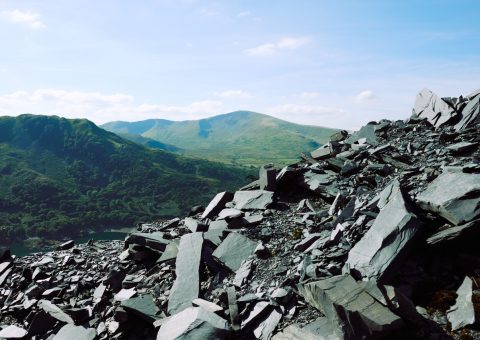The UNESCO World Heritage Committee has designated the Slate Landscape of North West Wales a World Heritage Site. This makes it the fourth World Heritage Site in Wales to receive this prestigious status.
“The monumental quarries and mines in the Snowdon massif are an unparalleled testament to how agricultural land was transformed during the Industrial Revolution. Although quarried in Roman times, Welsh slate became a global leader through sustained large-scale production from the late 18th to early 20th centuries. Its worldwide use, particularly as a roofing material, led to significant transcontinental developments in construction and architecture. The transfer of Welsh technology, such as sophisticated irrigation and drainage systems, also contributed significantly to the socio-economic development of many regions of the world,” UNESCO explains its decision.
Mark Drakeford, Leader of the Welsh Government, said: “This award recognises the significant contribution that this part of North Wales has made to the cultural and industrial heritage not only of Wales but of the world. Global recognition by UNESCO will help to preserve this unique heritage and history for future generations.”
The Welsh slate landscape around Snowdonia in the Welsh county Gwynedd was announced by the UK government as its nomination for UNESCO status in 2018, with Boris Johnson describing it as “an area of remarkable uniqueness and breathtaking beauty”.
Although slate had been mined in North Wales for over 1800 years, demand surged during the Industrial Revolution, with cities growing across the UK and worldwide and slate required for roofing. By the end of the 19th century, Wales was quarrying almost 500,000 tons of the sedimentary rock annually – about a third of the roofing slate used worldwide at the time – and so Welsh slate was used for palaces, terraces, buildings, and roofs around the world, including Westminster Hall in London and Copenhagen City Hall. In 1830, half of all buildings in New York City had roofs made of Welsh slate. The inscription by UNESCO reflects the important role of this region and it is not without reason that Wales was once said to have “covered the roofs of this world”.
The new World Heritage Site consists of six areas: Ogwen Valley, Dinorwig Quarry, Nantlle Valley, Gorseddau and Prince of Wales Slate Quarries, Ffestiniog and Porthmadog, Abergynolwyn and Tywyn. It includes the National Slate Museum in Llanberis, the magnificent Penryhn Castle and Plas Tan y Bwlch manor house, now the headquarters of the Snowdonia National Park Authority, as well as the famous historic Ffestiniog and Talyllyn Railway narrow gauge lines.
Other UNESCO World Heritage Sites in Wales include the Blaenavon Industrial Landscape, Pontcysyllte Aqueduct and Canal, and the castles and city walls of King Edward I – Beaumaris, Conwy, Caernarfon and Harlech.
Image: Dinorwig, Gwynedd © Crown Copyright (2021) Visit Wales

